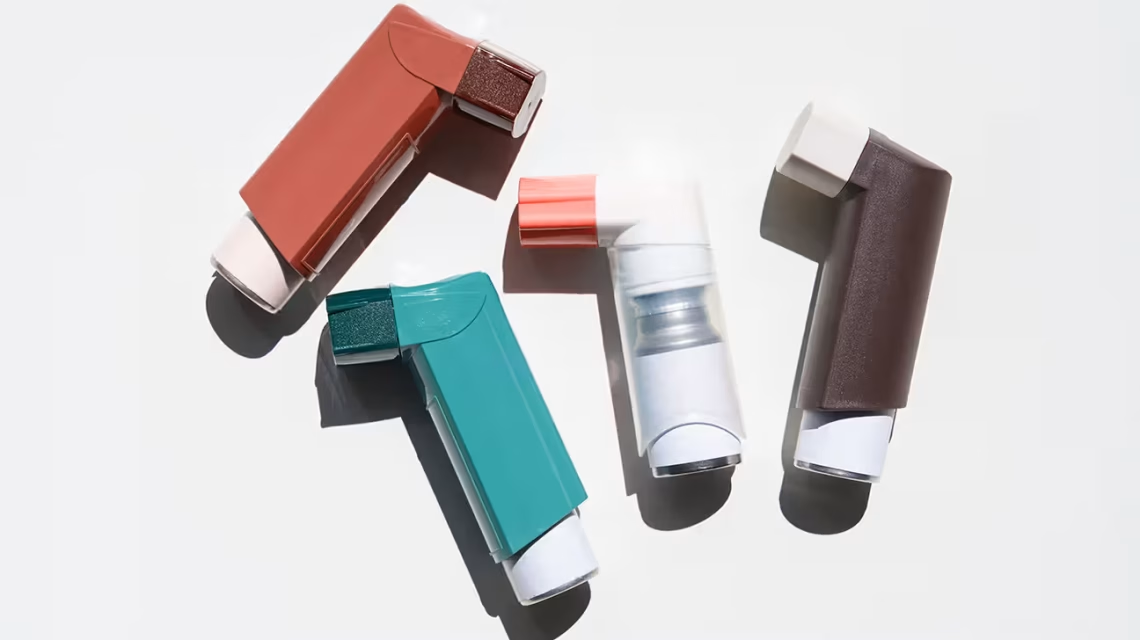Introduction
For people living with asthma, chronic obstructive pulmonary disease (COPD), or other respiratory conditions, inhalers are essential tools for delivering medication directly into the lungs. However, many patients do not use their inhalers correctly, which can reduce the effectiveness of the medication and lead to poorly controlled symptoms. Mastering your inhaler technique ensures you receive the full dose, experience quicker relief, and keep your condition under better control.
Why Proper Inhaler Technique Matters
- Maximizes medication delivery: Ensures the medicine reaches the airways, not just the mouth or throat.
- Improves symptom control: Reduces wheezing, coughing, and breathlessness.
- Minimizes side effects: Proper use lowers the risk of oral thrush or hoarseness from steroid inhalers.
- Saves money and time: Avoids wasting medication and reduces unnecessary doctor visits.
Types of Inhalers
Different inhalers require different techniques. The main types include:
a. Metered-Dose Inhaler (MDI)
A pressurized canister that releases a measured dose of medicine when pressed.
Best for: Most rescue and some controller medications.
Common mistakes:
- Not shaking the inhaler before use
- Pressing and inhaling out of sync
- Inhaling too fast
b. Dry Powder Inhaler (DPI)
Delivers medication in a dry powder form, activated by your breath.
Best for: Certain controller medications.
Common mistakes:
- Not inhaling forcefully enough
- Exhaling into the inhaler (moisture can ruin the powder)
c. Soft Mist Inhaler
Creates a slow-moving mist that’s easier to inhale.
Best for: Patients with difficulty coordinating breath and press.
Step-by-Step Guide for Using an MDI (With or Without a Spacer)
Using an MDI without a spacer:
- Shake the inhaler well for 5 seconds.
- Remove the cap and check for debris.
- Exhale fully to empty your lungs.
- Place the mouthpiece between your teeth and close your lips around it.
- Start to breathe in slowly, then press the canister once to release the medication.
- Continue inhaling deeply until your lungs are full.
- Hold your breath for about 10 seconds, then exhale slowly.
- Replace the cap after use.
- If using a steroid inhaler, rinse your mouth to prevent thrush.
Using an MDI with a spacer:
- Follow the same steps, but attach the inhaler to the spacer before step 4.
- Press the canister, then breathe in slowly from the spacer’s mouthpiece or mask.
- This method is especially helpful for children and people who have trouble coordinating inhalation.
Common Inhaler Mistakes to Avoid
- Forgetting to shake the inhaler (for MDIs).
- Inhaling too quickly (MDIs) or too softly (DPIs).
- Not sealing lips tightly around the mouthpiece.
- Skipping post-use mouth rinse for steroid inhalers.
- Using an empty inhaler without realizing it.
Tips for Success
- Practice regularly—even if you feel well, proper technique is a habit.
- Ask for a demonstration from your doctor or pharmacist.
- Mark your calendar for when to refill your inhaler.
- Keep backups—one at home, one in your bag, and one at work or school.
- Clean your inhaler weekly according to manufacturer instructions.
Conclusion
An inhaler is only as effective as the technique used to operate it. By understanding your inhaler type, following the correct steps, and avoiding common mistakes, you can ensure that your medication works as intended—helping you breathe easier and stay in control of your condition. Regular technique checks with your healthcare provider are a smart way to keep your skills sharp and your lungs healthy.
FAQs
How often should I check my inhaler technique?
At least once a year, or sooner if your symptoms are not improving.
Do I need a spacer?
A spacer improves medication delivery, especially for children or anyone who struggles with inhaler coordination.
What if I can’t hold my breath for 10 seconds?
Hold it for as long as comfortable—every extra second helps medication settle in your lungs.
Can I use someone else’s inhaler if I forget mine?
No—medications and dosages differ, and sharing is not safe.
How do I know when my inhaler is empty?
Some have dose counters; if not, track usage or test spray (for non-dose counter MDIs) before use.






